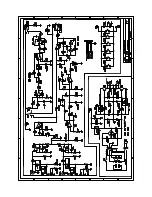
9
Calibration
Introduction
For optimal performance, you should calibrate your system to ensure proper level
matching between all speakers and the proper setting of all controls (including
crossover frequency, phase, and any channel delays your receiver/processor may
offer). This procedure will vary depending on system configuration and the information
below is provided as a basic guide to assist you. Refer to the owner’s manual for
your receiver/processor for information on performing the steps required to enter
their setup mode and adjust any applicable settings.
After all connections have been made, turn on the AC power to your system, starting
with the first piece of source equipment in the signal chain (such as a CD or DVD
player), then power on any dedicated equalizer, then power on your receiver/
processor/amplifier(s), and last but not least, power on the subwoofer-/s. You will
need to enter your receiver’s/processor’s setup mode and adjust any applicable
speaker settings to properly match your system configuration
Receiver/Processor
With Automated
Setup & Calibration
Function
After you have verified all speakers are connected and you have measured distances
of each to the listening position, perform the auto-setup routine on your receiver/
processor (if available). Many newer home theater receivers/processors combine
a measurement microphone and an automated setup routine to assist you with
proper setting of speaker levels, crossover frequency, speaker delay and phase.
Consult the owner’s manual for your receiver/processor for further instructions on
how to perform the setup routine. After the auto-setup routine is complete, verify
the final settings the receiver/processor selected to ensure there are no erroneous
settings (e.g. the settings should match your system configuration). Some settings
to verify may include:
-
Number of speakers (e.g. 7.1 or 5.1 system, etc.)
-
Type/size of speakers (e.g. small or large front/surround and subwoofer set to
yes/on)
-
Crossover point should be similar for identical speakers (e.g. if your system
using 3 of the samespeakers for all front channels, verify the receiver/proces-
sor selected the same crossover point for all these channels)
-
Crossover frequency should be selected. We recommend 80Hz for the sat-
ellite speakers to start with. Higher or lower crossover point may yield better
results in your system depending on your speaker setup
-
Note: some receivers do not have an adjustable frequency, instead there
is only a choice of “small” or “large”. In this case, we recommed choosing
“small”.
-
Gain settings for each channel should be reasonably close (e.g. if the speak-
ers are placed at even distances, the gain setting for each channel should
typically be within a couple dB from channel to channel). If the receiver/pro-
cessor gain trim setting for the subwoofer channel is a large value (e.g. +12
or -12dB) you may need to increase or decrease the subwoofer’s volume to
achieve a better match.
-
Low subwoofer gain/trim settings (on your receiver/processor) effect the oper-
ation of the “AUTO ON/OFF” signal sensing circuit. If your receiver/processor
gain is set to a low values (e.g. attenuating the signal -6dB or more) this
reduces the signal available to properly “turn on” the subwoofer when using
the “AUTO ON/OFF” feature. If your subwoofer turns off unexpectedly when
watching movies at low volumes, you may wish to increase the receiver’s/
processor’s subwoofer gain trim, and manually reduce the volume using the
subwoofer’s “VOLUME” control to maintain proper balance.
-
Polarity/phase; This should be adjusted for smoothest frequency response
near the crossover point.
-
EQ settings; if your receiver/processor allows you to see the eq settings for
each channel, verify that it is not adding any extra “limiter”, or “HPF” to the
subwoofer channel, and that it is not adding a high level of boost (e.g. >+3dB)
or cut (e.g. -10db).
NOTE:
In some installations, automated room eq algorithms may make undesired changes
to the subwoofer signal settings trying to obtain what they believe is the best room
response curve. In some systems these changes have been known to degrade the
overall sound quality of the subwoofer. If using a receiver/processor with automated
room EQ- function, we advise you listen to the system first with the EQ disabled,
then again with the EQ enabled, to determine if the changes are beneficial.
Содержание SUB 12.17
Страница 1: ...SUB12 17 Owners Manual ...
Страница 19: ...19 ...





































